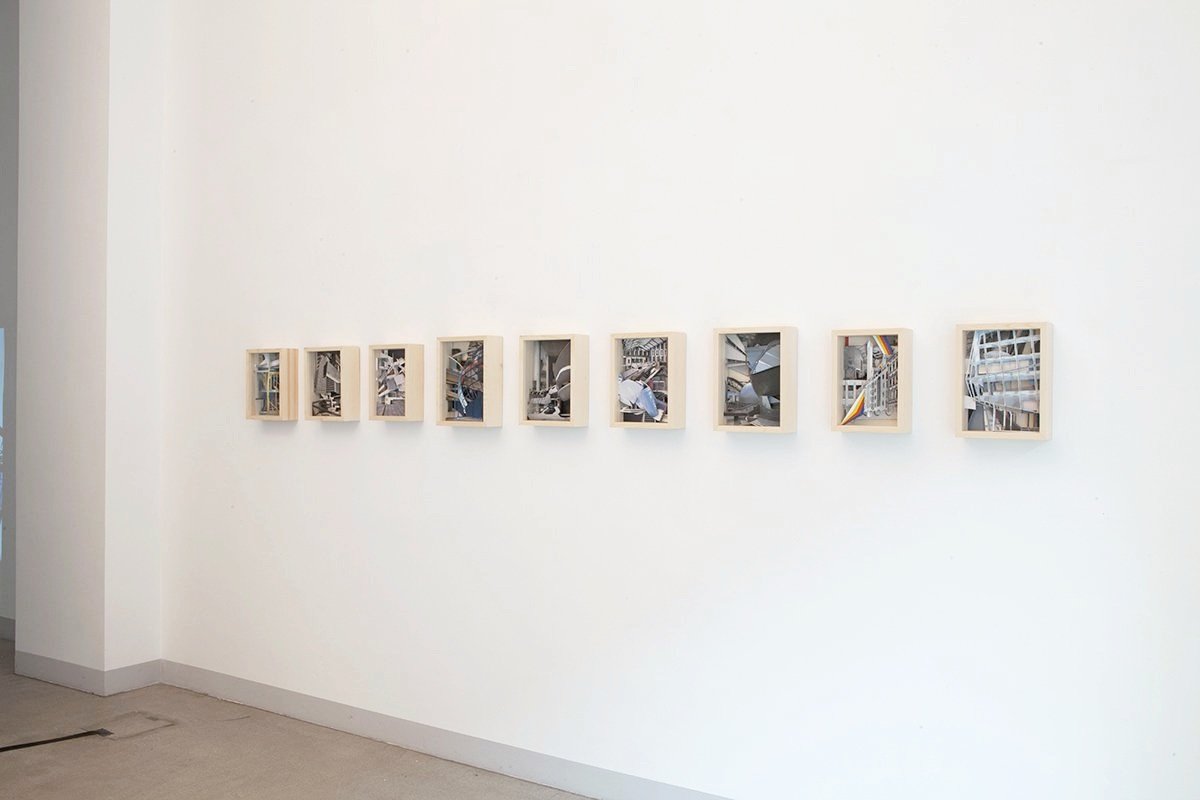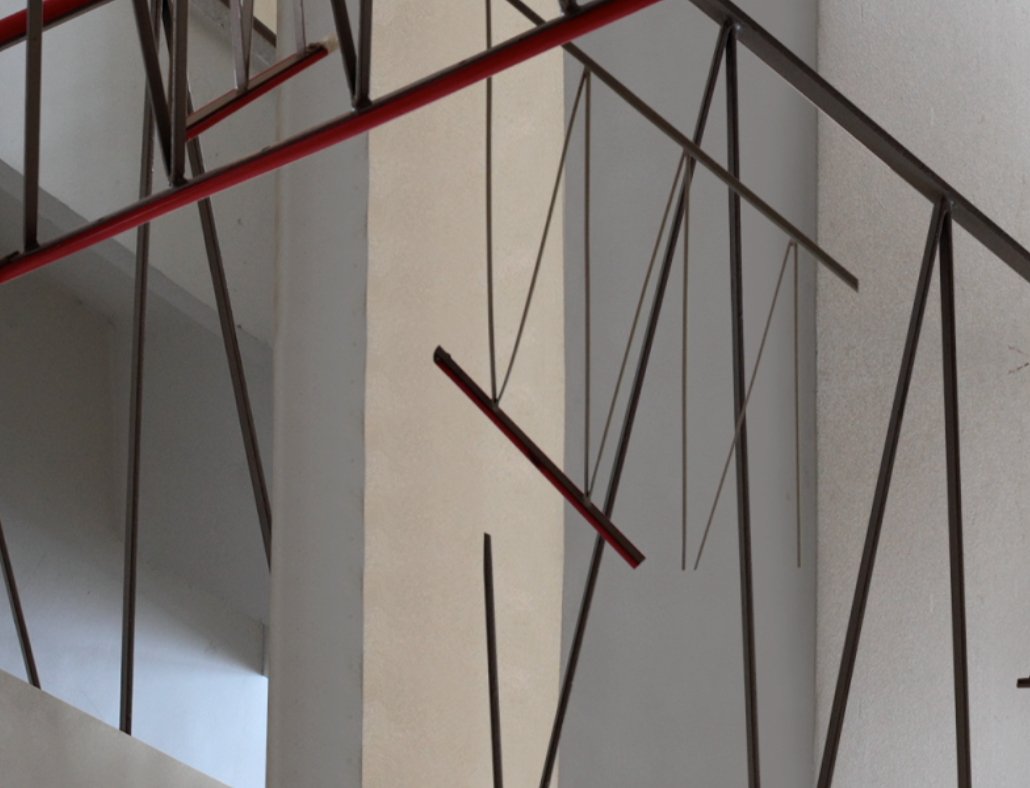In Relation to Places and Time
15.01.2015 — 28.02.2015, Galerie Raum mit Licht, Vienna
Two artists meet in the exhibition In Relation to Places and Time, Claudia Larcher and Hubert Lobnig, enhancing their understanding of the alterability of architecture and spatial volumes, and consequently also the reception of their subject matter.
Claudia Larcher shows several collages sourced from the images of single issues of different architecture journals. She has based the dimensions of her work on the formats of the various publications and also retained the images’ positions relative to one another in the print media concerned. The deserted architectural motifs no longer function as cultural historical testimonies, nor do they fulfill the archival mandate intrinsic to them; in their translation into artworks they develop instead all the more emphatic intrinsic relationships which both promote and challenge the constructing gaze, with the three-dimensional layering of the images of architecture commemorated through appropriation the artist’s work ultimately becomes an object itself. Here — starting with the architecture — she alludes to the constructing photographic view of precisely that, revealing a meta-level when she extracts constructs of architecture images for further constructive use while the collaged body of the image articulates itself as a volume through its densification in the actual space.
Similar architecture collages are to be found in another work, entitled Panorama, the shape of which can be identified as a hanging lamp object: Analogous to the design item it references, light breaks in the shade in the collage application, whereby the space inside is perceived through the mask of the constructed space outside to allude to the presence of the architecture that has been brought indoors — both in the masking of the shade like a reversed diorama, as well as in the interconnection with the concrete object.
So, through the artist the private gallery space with its subjective oriented reception is polyvalently occupied as a public space where the idea of the inner light also becomes significant to the world outside, not only in its original form but also in its artistically embellished version.
In addition, Claudia Larcher shows the video Vier Skizzen für ein Stiegenhaus [four sketches for a stairwell], which was produced during her exhibition at the Weisse Haus in Vienna. As is her praxis, she scans the architecture with her camera to remove elements from the background in the image to rearrange and ultimately animate it to correspond with the experience of the actual space of the building. The notion of the moving image may be understood literally here as the implied camera movements are not actually such but individual photographs taken in the stairwell that have been digitally re-assembled. If the relationship to the topography of the image determines the construction of the architecture collage, then the montage is its chronological counterpart: the latter not being regarded as the positioning of various cuts but generates itself in the animation of the image in the video itself, and is emphasised in the process by the use of a still image that is not real, whereby a chronological reading of the architecture first becomes possible — without wanting to copy the method of film-making. The stairwell as a place of transition and as a motif fits into the formally unedited montage of the individual images, and simultaneously provides the shared pivotal moment for both of the artists. (excerpt)
Text: Andreas Müller












